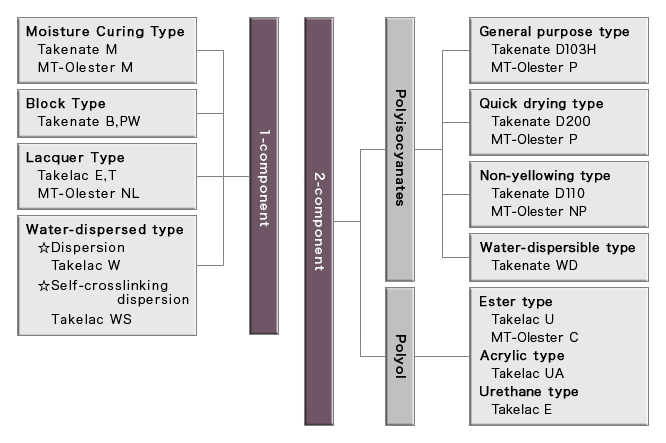These room temperature setting resins comprise a polyol base and a polyisocyanate curing agent, which are mixed at the time of use. The polyols used include acrylic polyol with an intramolecular hydroxyl group, polyester polyol and polyether polyol.
Depending on the raw material isocyanate, there are various types of polyisocyanate prepolymers, including the TDI, MDI, XDI, IPDI and HDI types. Among them, the range of applications open to aromatic isocyanates such as TDI and MDI is generally limited because they turn yellow easily when exposed to UV light, but XDI, IPDI and HDI do not yellow easily. They are used in a wide variety of applications, including coatings and adhesives, because physical properties such as curing characteristics, adhesion and plasticity can be altered freely through combinations of various polyols.

